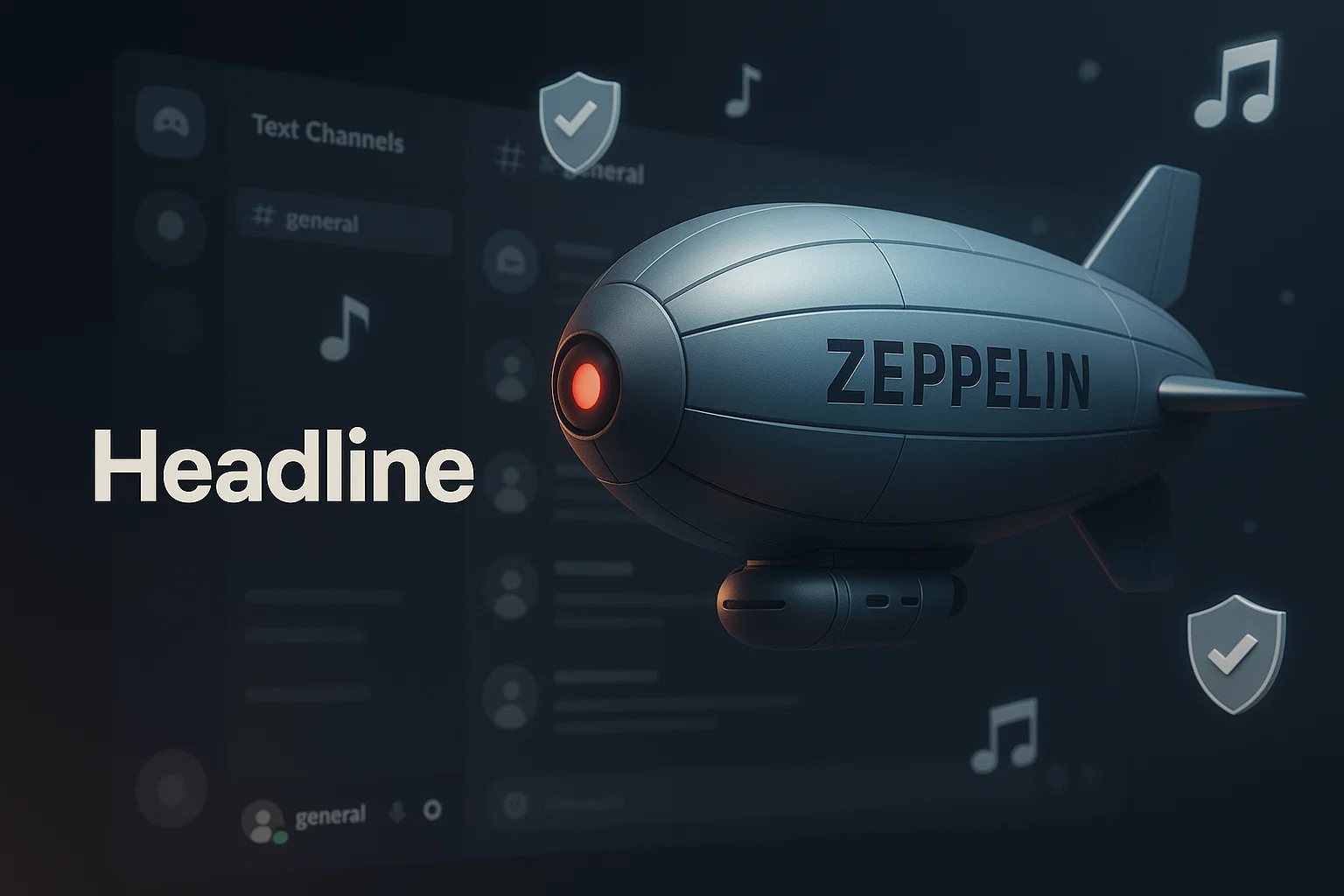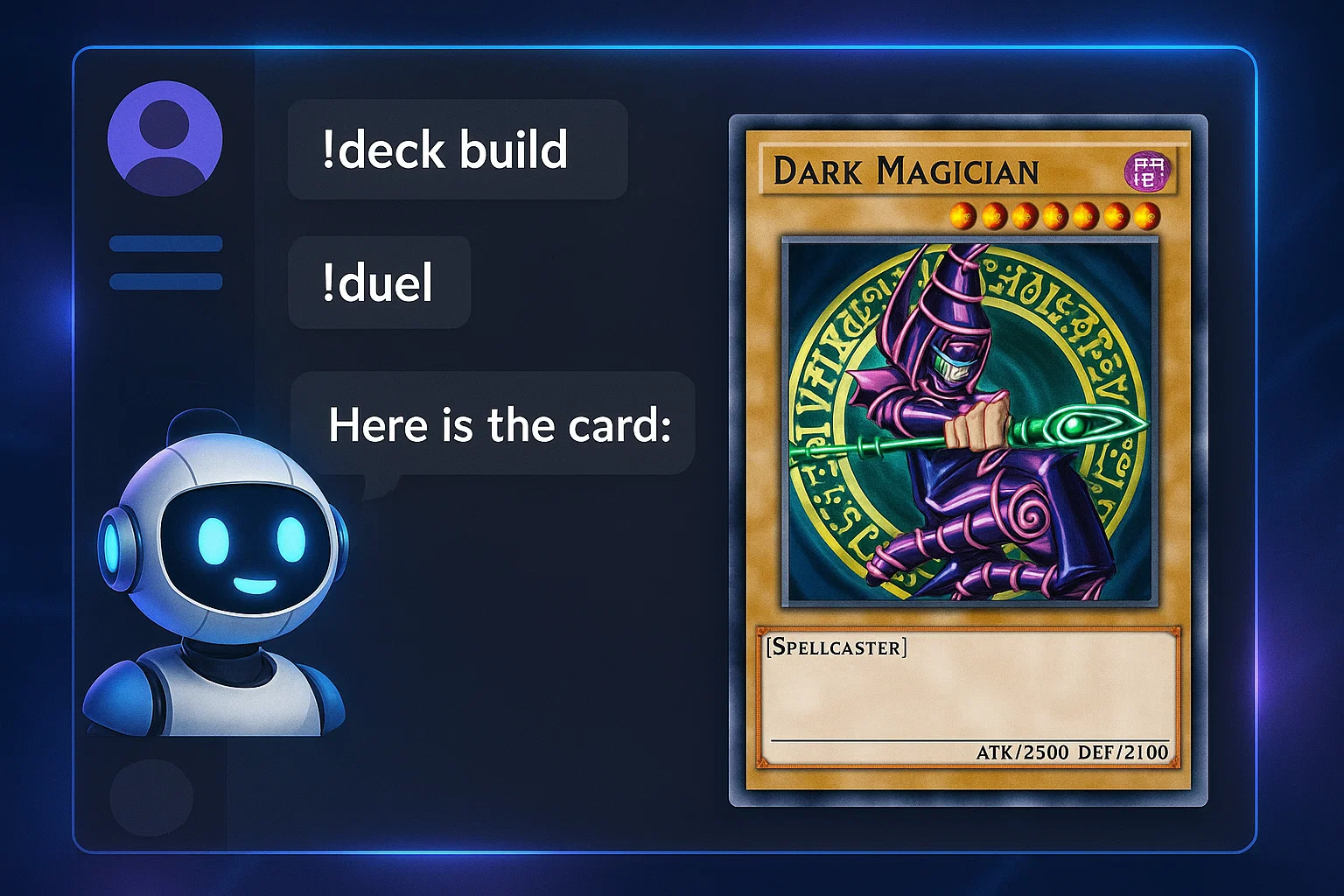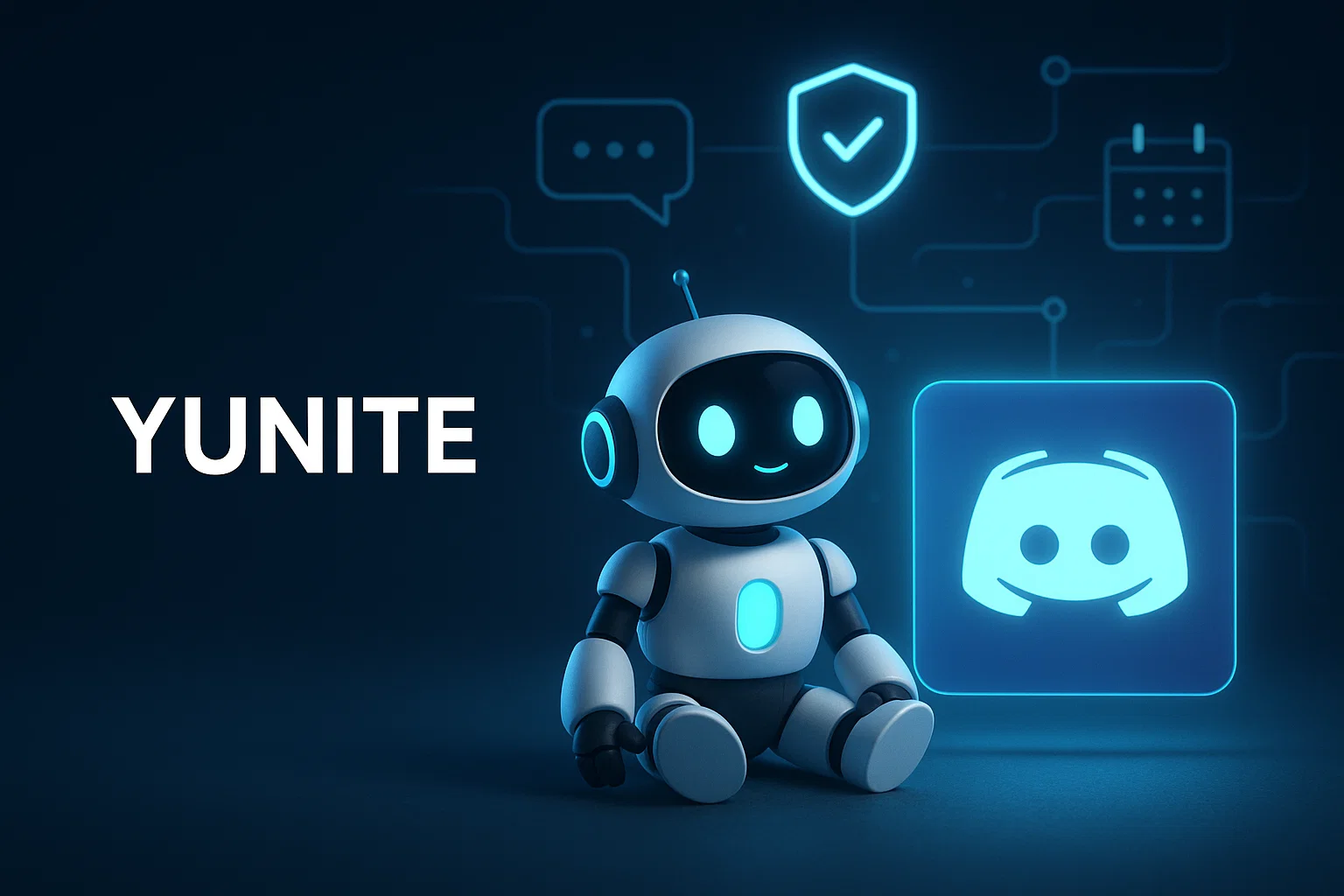Zeppelin discord bot is a flexible server assistant that automates moderation, music, and engagement to keep channels healthy and members active. Use the quick setup steps, secure permissions, and test features on a staging server to scale safely and reduce moderator workload.
Introduction
zeppelin discord bot is a go-to choice when you want a reliable, friendly assistant for moderation, music, and member engagement. This guide is informational and how-to oriented, designed to help you invite, configure, or self-host a zeppelin discord bot. You will learn setup steps, permission checks, troubleshooting tips, and two ready-to-copy code snippets you can adapt.
I’ll cover the key features, real setup examples, recommended tools, and the compliance items you need to consider. Related resources include the Discord developer docs and bot listing sites for discovery. In my experience, getting the basics right first, then adding automation, saves hours of moderator time and prevents friction for new members.
What is zeppelin discord bot and why it matters
Definition and core purpose
A zeppelin discord bot is a server assistant that automates routine tasks, enforces rules, and delivers community utilities. Typical features include moderation commands, music playback, reaction roles, event scheduling, and helpful server utilities. You can use a public hosted instance or run a self-hosted fork for maximum control.
Background and ecosystem
Most community bots run on libraries like discord.js or discord.py and authenticate via the Discord developer portal. Bots require proper intents and role placement to operate safely. The ecosystem includes public listings for easy invites, GitHub repos for self-hosting, and hosting platforms for deployments.
Why it matters
- Automates moderation and reduces human error.
- Improves member onboarding and retention.
- Enables customized workflows and integrations for your server.
- Because it removes friction, a well-configured zeppelin discord bot scales a community without burning out moderators.
How to set up zeppelin discord bot: step-by-step
This section gives a practical, actionable setup you can follow in a test server, then apply to production.
Invite and basic setup
- Locate a trusted invite or the official repository for the zeppelin discord bot, or create your own application in the Discord developer portal.
- Generate an OAuth invite with only the scopes you need, avoid Administrator unless you must.
- Place the bot’s role above any roles it must manage, then run the bot’s
helporsetupcommand to configure the prefix, mod-log channel, and defaults.
Moderation configuration
- Create a
Moderatorsrole and a privatemod-logchannel for audit entries. - Restrict critical commands like ban and prune to the
Moderatorsrole. - Enable anti-spam, rate limits, and auto moderation rules if the bot offers them.
Music and voice setup
- Grant
CONNECTandSPEAKin relevant voice channels for music features. - Confirm whether the zeppelin discord bot requires external streaming keys or special libraries, and test with a trusted account.
Self-hosting a clone (Node.js)
// Node.js, discord.js minimal bot, labeled and minimal error handling
// npm install discord.js dotenv
// Save as bot.js, set BOT_TOKEN in .env, run with `node bot.js`
const { Client, GatewayIntentBits } = require('discord.js');
require('dotenv').config();
const client = new Client({
intents: [GatewayIntentBits.Guilds, GatewayIntentBits.GuildMessages, GatewayIntentBits.MessageContent]
});
client.once('ready', () => {
console.log('Zeppelin clone running as', client.user?.tag);
});
client.on('messageCreate', async (message) => {
if (message.author.bot) return; // ignore bots
if (message.content === '!ping') {
try {
await message.reply('Pong!');
} catch (err) {
console.error('Reply failed', err);
}
}
});
client.login(process.env.BOT_TOKEN);
Explanation: This Node.js example starts a minimal bot, exposes a !ping command, and includes simple error handling. Use env variables for your token.
Self-hosting a clone (Python)
# python - discord.py minimal bot, basic error handling
# pip install discord.py python-dotenv
import os
import discord
from discord.ext import commands
from dotenv import load_dotenv
load_dotenv()
bot = commands.Bot(command_prefix='!')
@bot.event
async def on_ready():
print(f'Zeppelin clone ready as {bot.user}')
@bot.command()
async def ping(ctx):
try:
await ctx.send('Pong!')
except Exception as e:
print('Send failed', e)
bot.run(os.getenv('BOT_TOKEN'))
Explanation: A compact Python example for quick testing and further extension.
Best practices, recommended tools, pros and cons
Moderation and security best practices
- Apply the principle of least privilege, avoid broad Administrator rights.
- Keep a private
mod-logchannel and enable audit logs for actions. - Use environment variables and secrets management for tokens, and rotate tokens immediately if you suspect a leak.
Recommended tools and resources
- Discord Developer Documentation, learn permission models and intents.
- Pros: official and complete, Cons: steep learning curve. Start tip: create an application and copy the bot token into secure storage.
- top.gg and bot listing sites, for discovery and invites.
- Pros: reach and reviews, Cons: public exposure. Start tip: claim your listing and keep details updated.
- GitHub, for source, forks, and CI-based deployments.
- Pros: version control and collaboration, Cons: maintenance responsibility. Start tip: use automated deploys on merges to main.
Pros and cons summary
- Pros: automates repetitive tasks, supports music and events, improves engagement.
- Cons: public instances can be unreliable, self-hosting requires upkeep, music features may break due to third-party changes.
Challenges, legal and ethical considerations, troubleshooting
Common issues and fixes
- Permission errors, often due to role order; move the bot role higher than roles it must modify.
- Music or API failures, update dependencies and check any streaming API changes.
- Rate limits and disconnects, implement backoff, caching, and proper error handling.
Troubleshooting checklist
- Check bot role and permissions.
- Validate the bot token and environment variables.
- Inspect logs for rate limit notices or fatal errors.
- Test edge cases in a staging server before applying to production.
Compliance checklist
- Publish a clear privacy policy and terms of service if you collect user data.
- Avoid storing message contents without explicit consent.
- Use secure token storage and rotate credentials on suspicion of compromise.
Alternatives: If compliance is a heavy concern, prefer a moderation-only managed service or self-hosted solution where you control the data.
Search engines ask that page descriptions and content match user intent, and that meta text helps users decide whether to click. (Google)
SEO experts recommend concise meta copy and fast page speed as top priorities for better click-through. (Moz)
Monitoring, onboarding, and scaling
Monitoring and performance tips
Track command usage, uptime, and connection health. Wire logs to a hosted service or a lightweight dashboard, and set alerts for error spikes. For most communities, a simple uptime monitor plus error alerts is sufficient.
Community onboarding and templates
Create a short welcome flow with pinned rules and an FAQ. Use reaction roles for channel access and provide a clear #how-to channel that explains commands and moderation expectations. Templates for moderation messages help keep enforcement fair and consistent.
Scaling and maintenance
Schedule maintenance windows, keep dependencies updated, and automate tests for critical commands. Back up configs and key data regularly, and consider horizontal scaling for heavy voice or streaming workloads with stateless workers and a shared job queue.
Conclusion & CTA
zeppelin discord bot helps you automate moderation, run music, and add community features with minimal friction. Start in a staging server, apply least privilege permissions, and test each feature before going live. If you want templates, deployment scripts, or custom plugin work, Welcome to Alamcer, a tech-focused platform created to share practical knowledge, free resources, and bot templates. Our goal is to make technology simple, accessible, and useful for everyone. Provide free knowledge articles and guides in technology. Offer ready-to-use bot templates for automation and productivity. Deliver insights to help developers, freelancers, and businesses. Custom development services for bots and websites, on request. Reach out for a free template or a deployment plan tailored to your server.
Bold takeaways:
- Start with safe permissions, avoid Administrator.
- Test in a staging server before going live.
- Self-host for control, public listing for ease.
FAQs
zeppelin discord bot
A zeppelin discord bot is a Discord server assistant used for moderation, music, event scheduling, and utilities. It may be a hosted public bot, or a self-hosted repository you adapt to your needs.
What is zeppelin discord bot?
A zeppelin discord bot is a customizable community bot that automates moderation, runs music queues, and adds engagement tools. It can be invited as a public bot or cloned and self-hosted for more control.
How do I invite zeppelin discord bot to my server?
Use a trusted listing or the bot’s official invite, confirm the scopes, and ensure you have Manage Server permission. Review requested permissions and place the bot role above roles it should manage.
Can I self-host a zeppelin discord bot?
Yes, clone a trusted repository, set the BOT_TOKEN in environment variables, and deploy to a VPS or container. Use CI/CD for automated deploys and a secrets manager for tokens.
What permissions does zeppelin discord bot need?
Typical permissions include Manage Messages, Kick/Ban Members, Embed Links, Read Message History, and Connect and Speak for voice features. Only grant what you need.
Why are music commands failing?
Music features may rely on third-party streaming APIs. Verify that dependencies are up to date, check for required API keys, and inspect logs for errors or rate limit messages.
How do I secure my bot token?
Store tokens in environment variables or a secrets manager, never commit them to source control, and rotate the token if it might be compromised.
How do I troubleshoot permission problems?
Confirm role hierarchy, test with a moderator account, and check Discord audit logs for denied actions. Ensure the bot has the required guild and channel permissions.
Where can I learn best practices for bot setup?
Read the Discord Developer Documentation and resources on snippets and meta from major SEO guides for promoting your bot listing and documentation.
Further reading & resources
- Google Search Central guidelines for snippets and meta (Google)
- Moz Beginner’s Guide to SEO for CTR and meta tips (Moz)
- SEMrush blog for optimization workflows (SEMrush)
- Discord Developer Documentation for permission models and intents (Discord)
Compliance and disclaimer
This guide is informational and not legal advice. If your bot collects or stores personal data, follow your privacy policy, terms of service, and applicable laws such as GDPR or CCPA. Consult a legal professional for specific compliance guidance.



